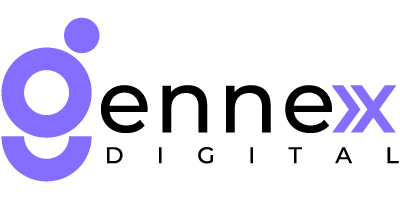Smart Targeting: The Key to Effective Performance Marketing

Share This Post
Share This Post
Introduction: Smart Targeting
In today’s fast-paced digital world, businesses are constantly looking for ways to reach the right audience at the right time. With so many options available, it can be difficult to figure out which marketing strategies will deliver the best results. This is where Smart Targeting comes into play. Performance marketing, combined with Smart Targeting, allows you to connect with your audience more effectively, driving measurable results that benefit your bottom line.
What Is Performance Marketing?
Performance marketing is a digital advertising strategy that focuses on achieving measurable results based on specific actions such as clicks, conversions, or sales. Unlike traditional marketing strategies, which focus on raising awareness, performance marketing is driven by actual outcomes. Marketers only pay for results, making it a cost-effective approach for businesses looking to maximize their ROI.
The Role of Smart Targeting in Performance Marketing
At the heart of successful performance marketing is Smart Targeting. Smart Targeting is the use of data, analytics, and technology to identify and reach the most relevant audience for your brand. By segmenting audiences based on behavior, interests, location, and other factors, businesses can tailor their marketing campaigns to deliver highly personalized and effective messages.
According to a recent study by WordStream, advertisers who use data-driven targeting strategies see 2 to 3 times higher conversion rates compared to those who rely on traditional marketing tactics. This shows just how powerful Smart Targeting can be when used correctly.
Why Is So Important?
- Increased Relevance: Traditional marketing methods often cast a wide net, hoping to catch a few interested leads. Smart Targeting, however, focuses on delivering the right message to the right person at the right time. By leveraging consumer data, you can create hyper-targeted campaigns that resonate with your audience, increasing the chances of conversion.
- Cost Efficiency: Performance marketing is all about achieving results on a budget. With Smart Targeting, businesses can avoid wasting money on ads that don’t reach their target audience. Instead, you’ll be able to focus your budget on strategies that are most likely to deliver the desired results.
- Better ROI: One of the greatest advantages of Smart Targeting is the ability to track and measure performance in real-time. This allows you to adjust your campaigns and optimize your strategies quickly to ensure you’re getting the best possible return on investment. With better targeting, your ads will reach the people who are most likely to engage with them, leading to higher conversion rates and, ultimately, a better ROI.
- Improved Customer Experience: Customers today expect personalized experiences. By using Smart Targeting, businesses can deliver messages that speak directly to their audience’s needs, preferences, and behaviors. This personalized approach leads to better customer satisfaction and a higher likelihood of conversion.
How Does it Work?
- Audience Segmentation: The first step in Smart Targeting is dividing your audience into smaller, more defined groups based on various characteristics. This could include demographics (age, gender, location), interests, past purchasing behavior, or engagement history. For example, if you’re running an e-commerce store, you can target customers who have previously bought products similar to what you’re advertising.
- Behavioral Targeting: Once you’ve segmented your audience, you can track their behavior online to understand how they interact with your brand. For instance, if a user visits your website but doesn’t complete a purchase, you can retarget them with relevant ads to encourage them to complete the transaction. This is known as behavioral targeting and is a key component of Smart Targeting.
- Lookalike Audiences: Another advanced feature of Smart Targeting is the use of lookalike audiences. By analyzing the characteristics of your current customers, you can find new prospects who share similar behaviors and interests. This helps you reach people who are more likely to be interested in your products or services.
- Dynamic Creative Optimization: With Smart Targeting, you can use dynamic creative optimization (DCO) to tailor your ads in real-time based on user data. For example, if you’re targeting users based on their location, you can show them an ad that highlights a nearby store or a special offer specific to their region. This adds an extra layer of personalization that increases engagement.
Benefits of Smart Targeting in Performance Marketing
- More Precise Advertising: With the right data and tools, you can pinpoint exactly who your ideal customers are, what they want, and how they behave. This precision helps you deliver ads that are more likely to resonate with your audience, leading to higher engagement and conversion rates.
- Faster Results: Because Smart Targeting allows you to reach the most relevant audience, your ads are more likely to generate quicker results. Whether you’re looking to increase website traffic, generate leads, or boost sales, Smart Targeting can help you achieve your goals faster.
- Data-Driven Decisions: One of the biggest advantages of Smart Targeting is that it’s backed by data. You can continuously track and analyze your campaigns in real-time, allowing you to make data-driven decisions that will improve the performance of your marketing efforts. According to McKinsey, businesses that make data-driven decisions are 23 times more likely to acquire customers and 6 times more likely to retain them.
- Scalability: As your business grows, so does the complexity of your marketing needs. Smart Targeting is scalable and can evolve with your business. Whether you’re targeting a local audience or expanding globally, Smart Targeting can be adjusted to meet the changing demands of your business.
Real-World Examples of Smart Targeting
- Facebook Ads: Facebook’s advertising platform allows businesses to target users based on their interests, behaviors, demographics, and even life events. By using Smart Targeting on Facebook, businesses can reach an incredibly specific audience, leading to higher engagement and conversions.
- Google Ads: Google’s search and display ads also offer robust targeting options, such as keyword targeting, location-based targeting, and remarketing. By using Smart Targeting in Google Ads, businesses can ensure their ads appear in front of users who are actively searching for related products or services, increasing the likelihood of conversions.
- Amazon Advertising: With over 300 million active users, Amazon is a goldmine for advertisers. By leveraging Smart Targeting through Amazon’s advertising platform, businesses can target customers based on their browsing history, purchase behavior, and even reviews. This ensures that ads are shown to users who are more likely to make a purchase.
Smart Targeting and Performance Metrics
To evaluate the effectiveness of your Smart Targeting strategy, it’s important to focus on key performance metrics. These include:
- Click-Through Rate (CTR): A high CTR indicates that your targeting is on point and that your ads are resonating with your audience. A study by WordStream found that the average CTR for Facebook ads across all industries is 0.9%, but with Smart Targeting, businesses can often see CTRs of 1.5% or higher.
- Conversion Rate: The conversion rate measures the percentage of users who take a desired action, such as making a purchase or signing up for a newsletter. Studies show that Smart Targeting can increase conversion rates by up to 2 to 3 times compared to traditional advertising methods.
- Cost Per Acquisition (CPA): CPA is a critical metric in performance marketing. By optimizing your targeting efforts, you can reduce the cost of acquiring new customers, ensuring that your marketing budget is spent efficiently.
- Return on Ad Spend (ROAS): ROAS measures the revenue generated for every dollar spent on advertising. With Smart Targeting, businesses can see higher ROAS, as their ads are more likely to reach people who are ready to take action.
Conclusion:
The digital marketing landscape is more competitive than ever, and businesses need to make every marketing dollar count. Smart Targeting is the solution that allows you to focus on the most relevant audience, maximize your ad spend, and achieve measurable results. By leveraging data, advanced analytics, and technology, you can create highly personalized campaigns that drive conversions, improve ROI, and enhance the overall customer experience.
If you’re looking to take your performance marketing to the next level, incorporating Smart Targeting into your strategy is the way forward. By doing so, you’ll not only increase your chances of success but also position your brand to thrive in a rapidly evolving digital environment.


